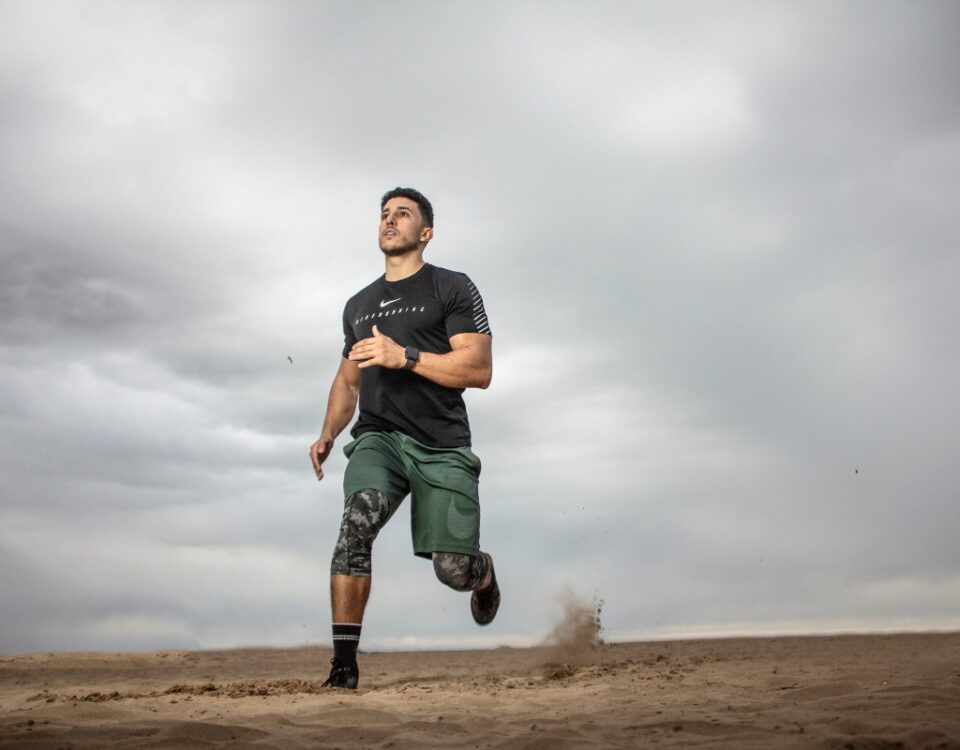
These 3 Writing Exercises Can Help You Stay Sober
April 14, 2020
What is Dialectical Behavioral Therapy?
April 20, 20206 Easy Grounding Techniques to Help You Manage Anxiety
Addiction doesn’t always come alone; sometimes it brings a friend. At least half of people with substance use issues also have co-occurring mental health issues.
Among the most common mental health issues are anxiety disorders. Nearly 18 percent of people with anxiety disorders also have a substance use disorder.
And about 35 percent of people with post-traumatic stress disorder, or PTSD, also have an alcohol use disorder. What’s more, anxiety is a common withdrawal symptom and it may last for weeks after acute withdrawal.
The best way to cope with an anxiety disorder is to get professional therapy. A therapist can help you understand the roots of your anxiety and perhaps prescribe medication to help get it under control.
However, if you need to manage your anxiety right this minute, these grounding techniques can help.
Practice Mindfulness
First, consider starting a regular mindfulness practice. There are many resources online and some therapists even include mindfulness as part of treatment.
The major advantage of mindfulness is that it helps you become more aware of your anxiety symptoms and engage with them nonjudgmentally.
So, for example, if you have a panic disorder, you might notice that a panic attack starts with a slight constriction in your chest or slight shortness of breath. The sooner you pick up on the signals, the sooner you can start to calm yourself down.
Mindfulness also helps you practice staying present so that it’s easier to ground yourself when you notice anxiety symptoms.
The 5-4-3-2-1 Method
The core of all grounding techniques is to find a way to bring yourself into the present moment and away from ruminating on past mistakes or worries about the future. The 5-4-3-2-1 method is a systematic and fairly comprehensive way to do that.
Start by looking around and naming five things you see in your immediate environment. That should be easy enough.
Next, identify four things you can feel. Maybe you feel your weight in your chair or the collar of your shirt rubbing on your neck.
Next, identify three sounds you hear. It might be the sound of the air conditioner or a plane flying overhead.
Listening for sounds can be especially helpful if your rumination tends to be verbal, as is usual. Next, identify two smells.
This one is perhaps the most challenging because we are not used to relying on our sense of smell. You may have to actively seek out two things to sniff.
Try to find something pleasant. Finally, focus on one thing you can taste.
If you don’t already have a taste in your mouth, perhaps from brushing your teeth or eating, you might want to have a sip or a bite of something and focus on the taste.
Breathe Deeply
Breathing deeply is an excellent way to ground yourself for two reasons. First, there are definite sensations associated with breathing that we typically ignore because we are so used to them.
They include the expansion of your chest or abdomen, the cool air coming in through your nose or mouth, and the warm air going out. You may even notice that, because of your anxiety, you haven’t even been breathing at all.
The other reason breathing is good for anxiety is that it physically calms you down. When you’re anxious, your sympathetic, or fight-or-flight, system is overactive, preparing for a threat.
The way to calm this system down is to activate your parasympathetic, or rest-and-digest, system. You can do this by taking slow, deep breaths.
The exhale is particularly important because the exhale stimulates the vagus nerve, which activates the parasympathetic system. One popular breathing scheme is to breathe in for four, hold for seven, and exhale for eight. This is only a suggestion; use whatever count works for you.
Take a Walk
If you can, taking a walk is a great way to ground yourself and relax. First, a walk exposes you to different stimuli.
You see new things, you get your blood pumping, and you breathe. This is a perfect way to engage your senses.
As a form of exercise, walking also stimulates blood flow to your brain, releases endorphins, and releases BDNF, which grows brain cells in certain parts of the brain. All of this helps improve your mood and moderate your reaction to stress.
Feel Your Feet
One way to literally ground yourself is to put your attention in your feet. Feel your feet in your shoes or against the ground or floor.
Feel your weight on your feet. Let your attention rest there for at least 30 seconds. This works because we have a huge number of nerve endings in our feet and yet we rarely notice the sensations coming from them, unlike our face or hands, which we’re generally more aware of. It’s also a good grounding exercise to combine with taking a walk.
Change Your Focus
From a long-term perspective, avoidance is not a great way to cope with anxiety. It’s much better to work through your issues with a therapist and develop mindful awareness of your anxiety symptoms.
However, in the short term, sometimes a distraction is what you need. If you’re worried about something that might happen, watch TV, play video games, or do something else that takes up your attention.
If those aren’t options, make up little games. Imagine what you would see, hear, and feel walking through every room in your house, for example.
Visualizations take a lot of mental energy and concentration, leaving very little for worry. If visualization isn’t your thing, try counting down from 100 by sevens.
Grounding is all about bringing yourself into the present moment and engaging your senses is the fastest way to do that. Find one or two techniques that work for you and practice them before you need them. Make a plan to use a strategy that works for you in a common situation that makes you anxious.
At The Kimberly Center, grounding is just one of many evidence-based methods we use to help our clients cope with anxiety and other mental health challenges. To learn more about our programs, call us today at 855-452-3683.




